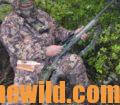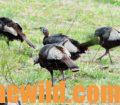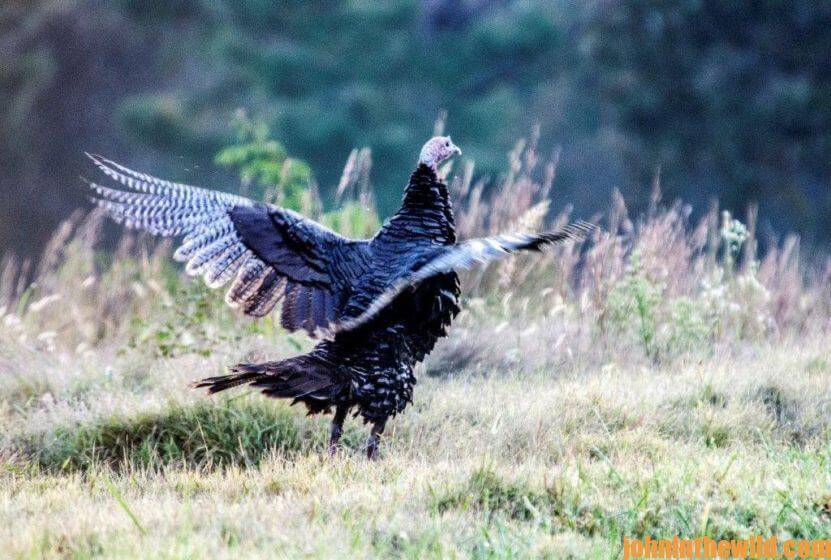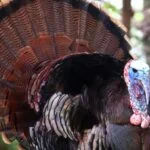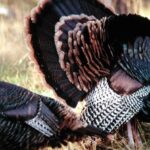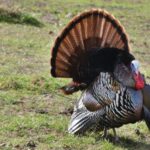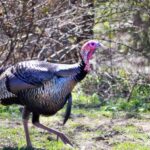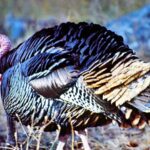Editor’s Note: Financial advisor Trey Dorman of Birmingham, Alabama, has hunted turkeys since he was 12-years old and guided for 24 years at the Lakes of Leavellwood in West Greene, Alabama (https://leavellwood.com/ – 205-372-2323). Leavellwood offers outstanding turkey hunting, trophy deer hunting and trophy bass fishing.
 The second year I was at Troy University, I met a fellow named Tommy Youngblood. Every morning, when I drove from where I was living to school, I’d see this big, longbeard gobbler feeding out in a peanut field. Sometimes I’d spot two gobblers with 15-20 hens in this peanut field. Not only were these turkeys out in the field in the mornings when I went to school, those turkeys were also out in the field at noon when I went home to eat lunch and remained there when I drove back to school after lunch, and when I drove home from school in the afternoon.
The second year I was at Troy University, I met a fellow named Tommy Youngblood. Every morning, when I drove from where I was living to school, I’d see this big, longbeard gobbler feeding out in a peanut field. Sometimes I’d spot two gobblers with 15-20 hens in this peanut field. Not only were these turkeys out in the field in the mornings when I went to school, those turkeys were also out in the field at noon when I went home to eat lunch and remained there when I drove back to school after lunch, and when I drove home from school in the afternoon.
Through some dedicated research, I learned that my friend Tommy Youngblood had permission to hunt that peanut field and all the land around it. I finally met-up with Tommy and said, “All day, every day, I see those turkeys out there in that peanut field.” Tommy explained, “I’ve been hunting this property for 20 years, and I’ve learned there’s no way you can kill a turkey when he’s out in that peanut field. You can waste an entire turkey season trying to take them. There’s absolutely nothing you can do to take those turkeys. I’ve tried everything I know to do, and I still haven’t been able to bag them.”
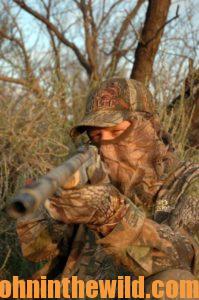 I let two or three days pass before I called Tommy and said, “Hey, those turkeys are out there in that peanut field,” to which he replied, “I know that. They’re out there every day.” Several days went by, and I called Tommy again and told him, “Hey those turkeys are out there in that peanut field.” Once more he replied, “I know; they’re out there every day.” Finally, one day I told Tommy, “If you’re not going to go out there and kill those two gobblers, I’d like to give it a try.” Tommy told me, “Okay, if you think you can kill those turkeys, I’ll go with you in the morning, and we’ll try just that.” That afternoon after class, I watched those turkeys and identified which trees those turkeys would go into when they left the peanut field. That night, I asked Tommy to pick me up at 4:00 am. Tommy answered, “There’s no daylight until 6:00 am.” I told him I knew that, but we were making a long walk and had to be in position to take the toms before they woke up.”
I let two or three days pass before I called Tommy and said, “Hey, those turkeys are out there in that peanut field,” to which he replied, “I know that. They’re out there every day.” Several days went by, and I called Tommy again and told him, “Hey those turkeys are out there in that peanut field.” Once more he replied, “I know; they’re out there every day.” Finally, one day I told Tommy, “If you’re not going to go out there and kill those two gobblers, I’d like to give it a try.” Tommy told me, “Okay, if you think you can kill those turkeys, I’ll go with you in the morning, and we’ll try just that.” That afternoon after class, I watched those turkeys and identified which trees those turkeys would go into when they left the peanut field. That night, I asked Tommy to pick me up at 4:00 am. Tommy answered, “There’s no daylight until 6:00 am.” I told him I knew that, but we were making a long walk and had to be in position to take the toms before they woke up.”
The next morning was very dark, and we could see lightning off in the distance. When we reached the place where the turkeys had gone into the woods the afternoon before, we sat down and prepared to take the turkeys. We had moved as quietly as possible to reach this spot, and as we sat on our stands, the storm came closer to us. We heard a loud clap of thunder, and both turkeys gobbled about 50 yards from us. I got my gun up to prepare to shoot, and I whispered to Tommy, “Get your gun up.”
“I want you to kill one of those turkeys,” Tommy replied. I smiled under my mask and explained to Tommy, “There are two gobblers – one for me and one for you – so get your gun up.” The first turkey pitched-off the roost and landed right in front of my gun barrel, about 30-yards away. When Tommy said, “Kill him,” I whispered back, “No. I told you there are two gobblers.” Then the second turkey pitched-off a limb where he’d been roosting and landed right in front of Tommy’s gun barrel. I whispered, “Okay, we’re going to take them on the count of 3 – 1, 2, 3.” We killed both those turkeys and were back at the truck before most hunters even had heard a turkey gobble that morning. Since that hunt, Tommy and I have been best friends for 25 years. The entire time I was in college, there were very-few mornings that Tommy and I didn’t hunt together.
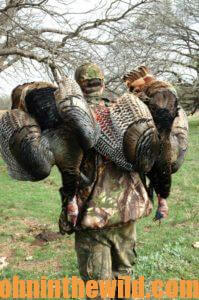 What I Learned from These Peanut-Field Toms:
What I Learned from These Peanut-Field Toms:
* You may spot turkeys out in a field, especially a peanut field, that are there all day, every day. So, learn who owns or leases the land, and talk to him. You may have a chance to take those turkeys.
* One of the only ways to take a bad gobbler, or in this case two tough gobblers, is to know exactly where they go into the woods out of a field to roost. More than likely they’ll return to that field the same way they’ve left the field the day before.
* You don’t need to be greedy. Anytime you can help another turkey hunter take a turkey that he hasn’t been able to take, you may make a friend for life. You also may get a place to hunt turkeys that you never may have had the opportunity to hunt, if you haven’t helped that person kill that gobbler.
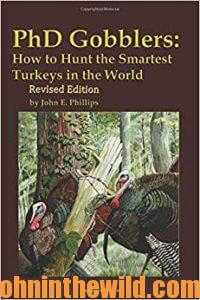 To learn more about turkey hunting, check out John E. Phillips’s latest Audible book, “PhD Gobblers: How to Hunt the Smartest Turkeys in the World, Revised Edition” at https://www.amazon.com/PhD-Gobblers-Smartest-Turkeys-World-ebook/dp/B083V83RLG, and available in Kindle, print and Audible. You may have to cut and paste this link into your browser. (When you click on this book, notice on the left where Amazon says you can read 10% of this book for free and hear 10% for free). To learn about other turkey books by John E. Phillips, go to www.amazon.com/author/johnephillips.
To learn more about turkey hunting, check out John E. Phillips’s latest Audible book, “PhD Gobblers: How to Hunt the Smartest Turkeys in the World, Revised Edition” at https://www.amazon.com/PhD-Gobblers-Smartest-Turkeys-World-ebook/dp/B083V83RLG, and available in Kindle, print and Audible. You may have to cut and paste this link into your browser. (When you click on this book, notice on the left where Amazon says you can read 10% of this book for free and hear 10% for free). To learn about other turkey books by John E. Phillips, go to www.amazon.com/author/johnephillips.
Tomorrow: The Jefferson Turkey for Tucker with Trey Dorman

